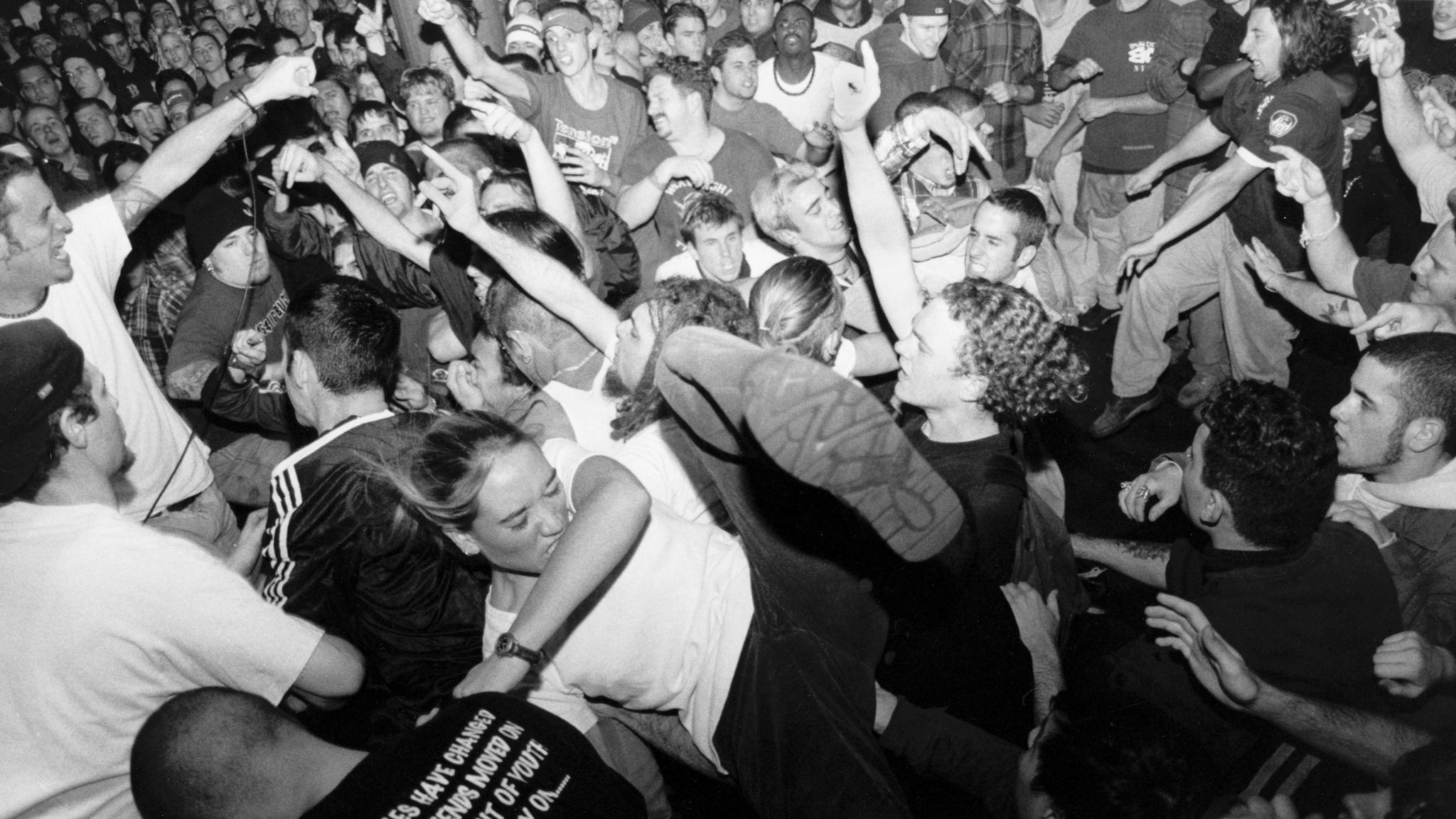The Last Time New York Was Hardcore
In the ’90s, one high-octane underground music scene desperately held on to its rebellious roots of power chords, slam dancing and stage diving. What happened to hardcore?
More than three thousand people surround me in the packed Roxy nightclub on West 18th Street in Manhattan. It’s hot. We’ve been dancing for hours. But the wind-milling arms, roundhouse kicks, and javelin-like body tosses on this night in ’97 bear little resemblance to the more subdued moves once executed in Roxy’s early days as a roller disco. Still, we’re grateful the surface below our feet was custom designed to support hard falls.
Instead of short-shorts and go-go boots, the few females in attendance are wearing cargo shorts and Doc Martens. Many of the more buff men have relinquished their shirts, revealing glazed, inked skin and nipple piercings matching the ones in their septums.
The houselights darken. Piercing feedback drowns out the roar of the crowd. After four quick clicks of drumsticks, it’s chaos.
The lights blare again. The headlining band’s singer, Lou Koller of Sick of It All, is at the foot of the stage, a pile-on of fans mounting at his feet.
He screams his first lines of lyrics: “Thinking back on what we had!”
The audience handles the next part: “Wooooah-Oh!”
Distorted guitar parts are blasted out over a catchy groove. Crowd members defend themselves from possessed slam dancers. Koller offers the mic to a crowd surfer. Someone in the pit falls down, and three people quickly scoop him up.
“Hardcore was very real,” says Kevin Gill, a former co-manager of the underground hardcore record label Striving for Togetherness. “It was punching you in the face, where punk was shoving you and saying, What’s up, bro? Hardcore’s about ‘fuck the world,’ but it’s also about the opposite: respecting people.”
After a few minutes of near complete sensory overload, the band strikes the tune’s last note, the crowd cheers, and everyone readies themselves for the next song.
Intense, original and cultivating an infectious sense of community, hardcore music began its reign of underground terror nearly forty years ago. Though its fabric extends far beyond traditional sonic labels, when it emerged in the late ’70s hardcore was simply defined as a more rambunctious, faster-paced form of punk rock. Merging with thrash metal in the ’80s, it experienced both jumps and dips in popularity. But throughout the ’90s a slew of fresh faces officiating a polygamous marriage between punk, metal and hip-hop reignited the scene, making hardcore the biggest it’s ever been in and around New York City.
“The mid-90s was the best,” says Tim Williams, front man of the Long Island band Vision of Disorder. “There was no makeup. No facades. No laser-light shows. The music came from an honest place. And I know these people personally. They weren’t talking shit.”


